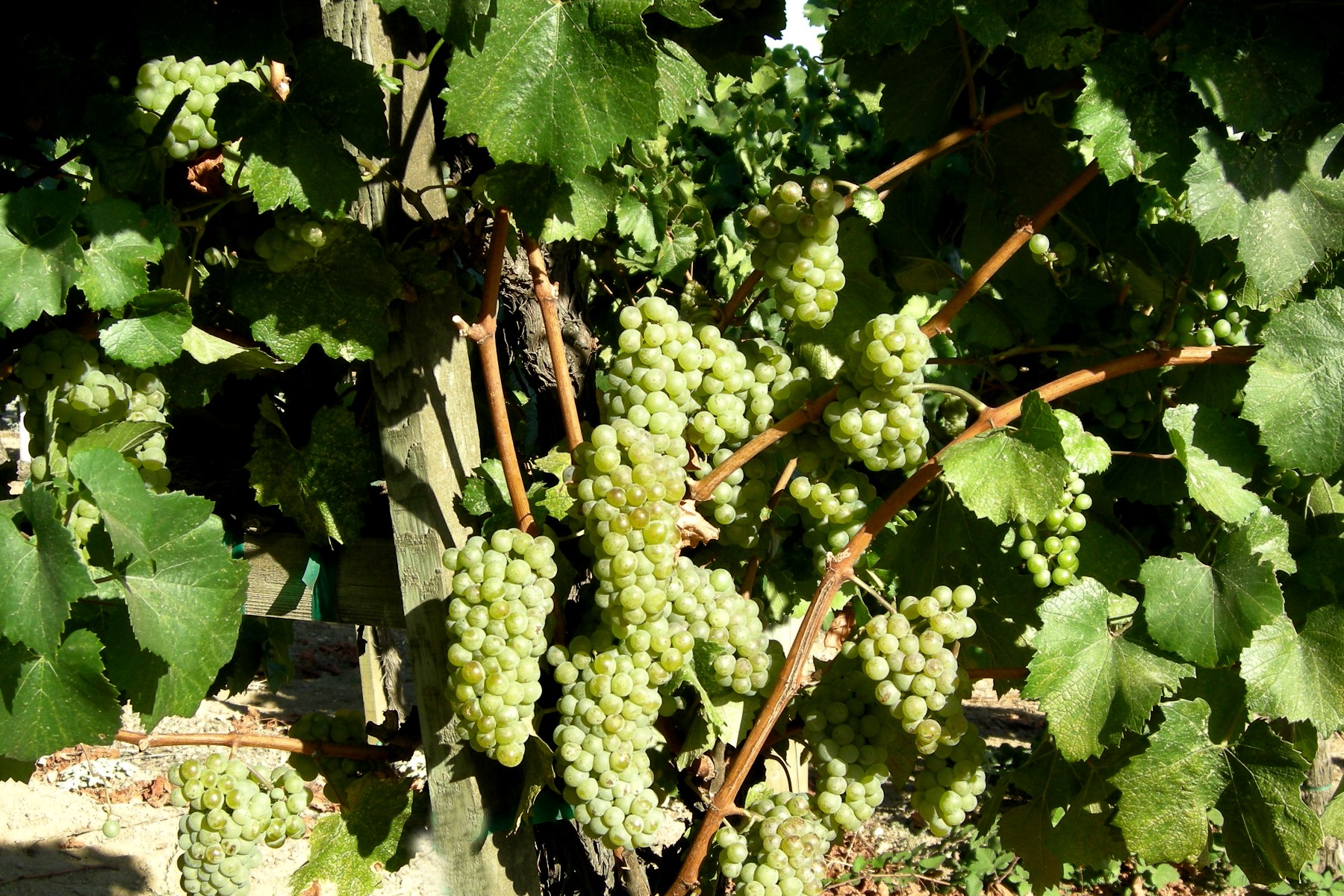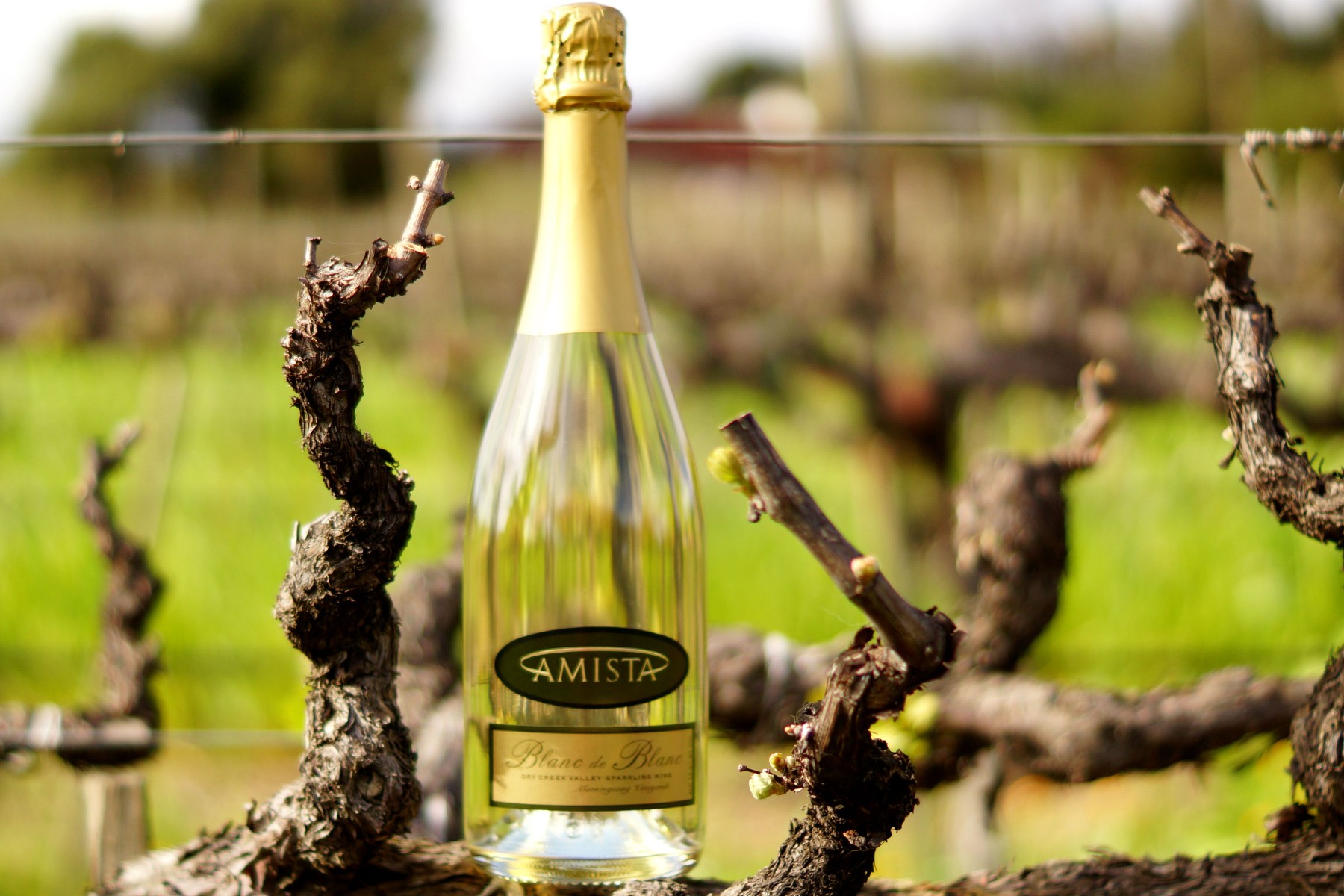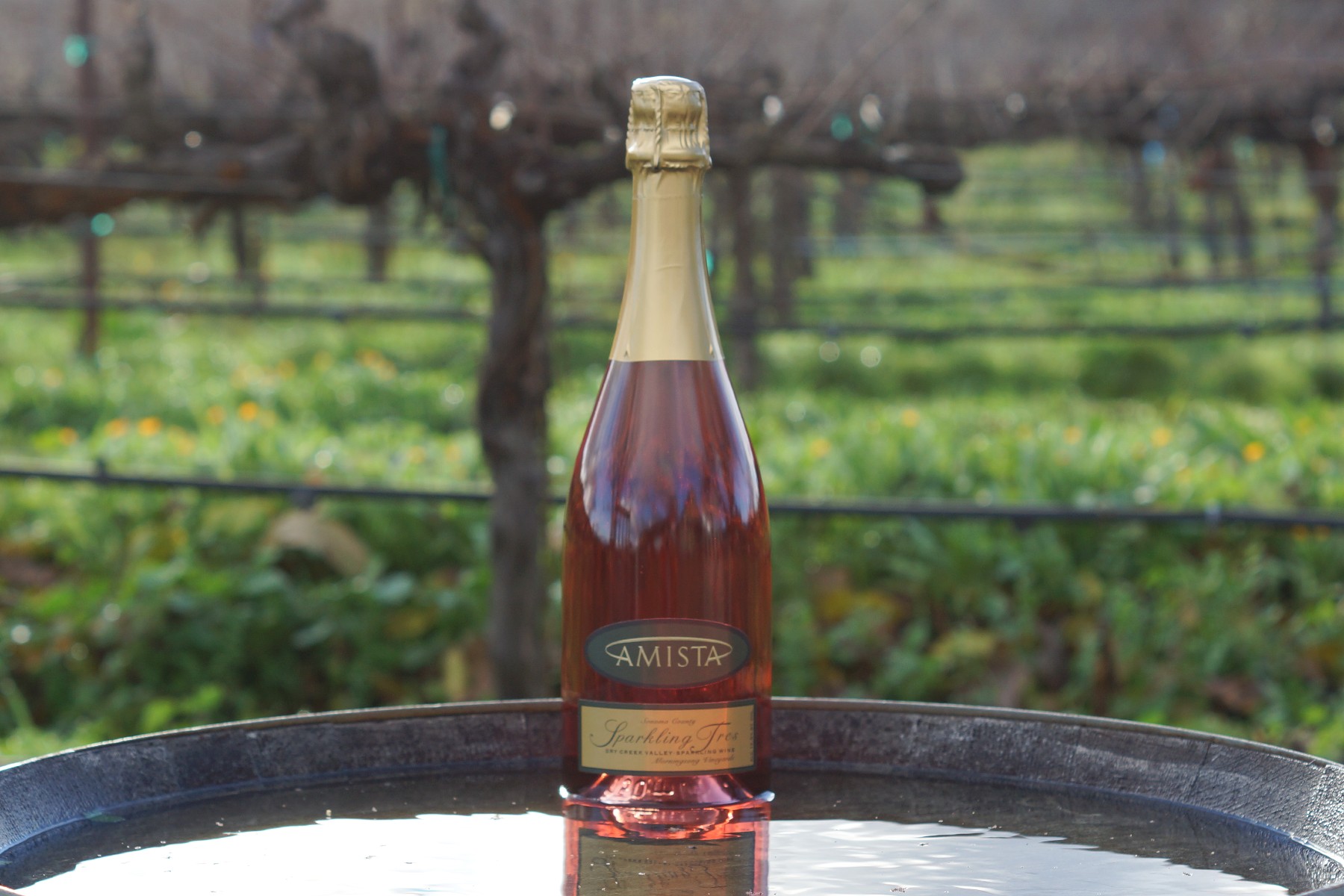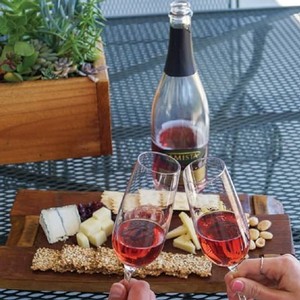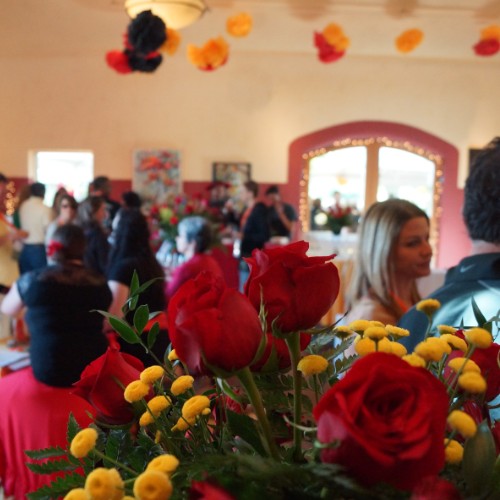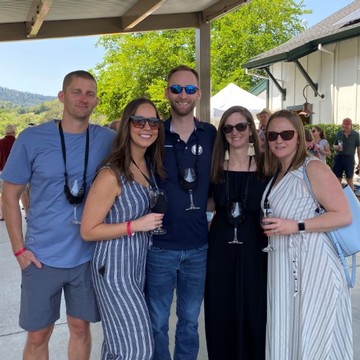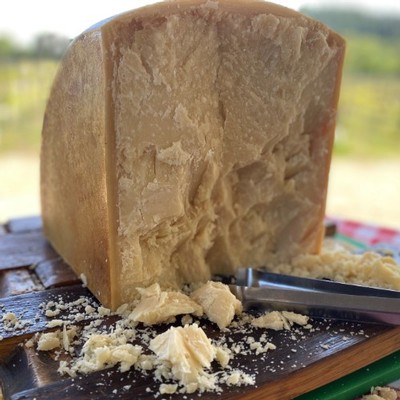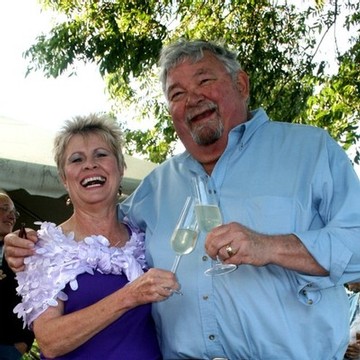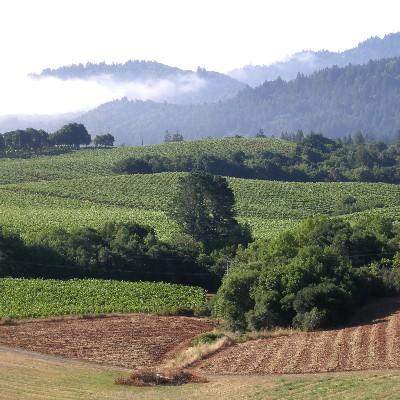Sparkling Moments at Amista Vineyards
Visit Amista for a Taste of Wine and a Taste of Nature
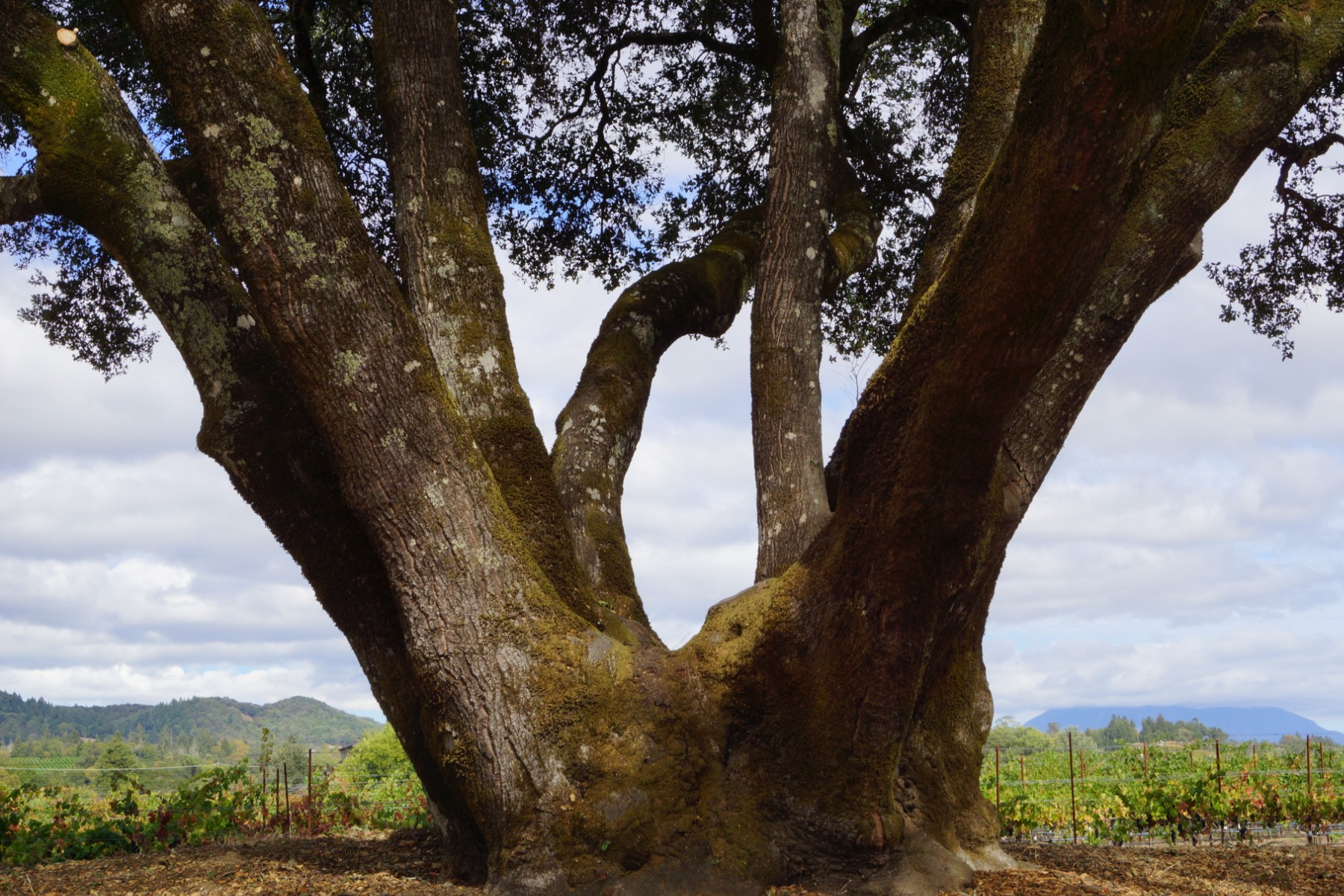
Our little town of Healdsburg takes center stage in this article that curates a perfect Sonoma wine country getaway. And Amista is one of the recommended wineries to visit for not only a taste of wine, but also a taste of nature.
Venture Out to Taste Among the Vines
Writer Jessie Beck says, “To sample the area’s best vintages, it’s absolutely worth venturing out to the wineries for a tasting among the vines.” The articles feature wineries that pair wine with nature including, Amista Vineyards that offers “wine and hike tours.”
Healdsburg – Special Place for Visitors and Locals
Healdsburg has become a destination for well-heeled travelers. “Right now, one of the most exciting towns to stay in is Healdsburg, which is experiencing a spate of openings and remodels,” explains the article. At the same time, Healdsburg remains a charming hometown where, as locals, we enjoy the same activities described by the author.
We agree with the writer’s advice, “Even if you have been to Healdsburg before, go again. Though many old favorites remain, much is changing in this small NorCal town. Use this guide to navigate it all—from where to stay and things to do to what to eat and drink in this corner of Sonoma wine country.”
We Love Sharing Healdsburg with You!
We are blessed to call this our home and love to share it with you. We are especially proud of our Vineyard Adventure Walk, which was developed in partnership with the Sonoma County Winegrowers. You can enjoy a self-guided stroll around our vineyard and see the grapes we grow, view our 200-year-old heritage oak and learn about the Habitat Restoration Project designed to restore the habitat for the Coho salmon and Steelhead trout that run in Dry Creek.
Read “Your Perfect Weekend Getaway in Sonoma Wine Country” by Jessie Beck in AFAR Magazine.
We invite you to experience Healdsburg, enjoy our Vineyard Adventure Walk and explore our estate grown sparkling and Rhône wines. Come Taste with Us!
Why We Love Healdsburg
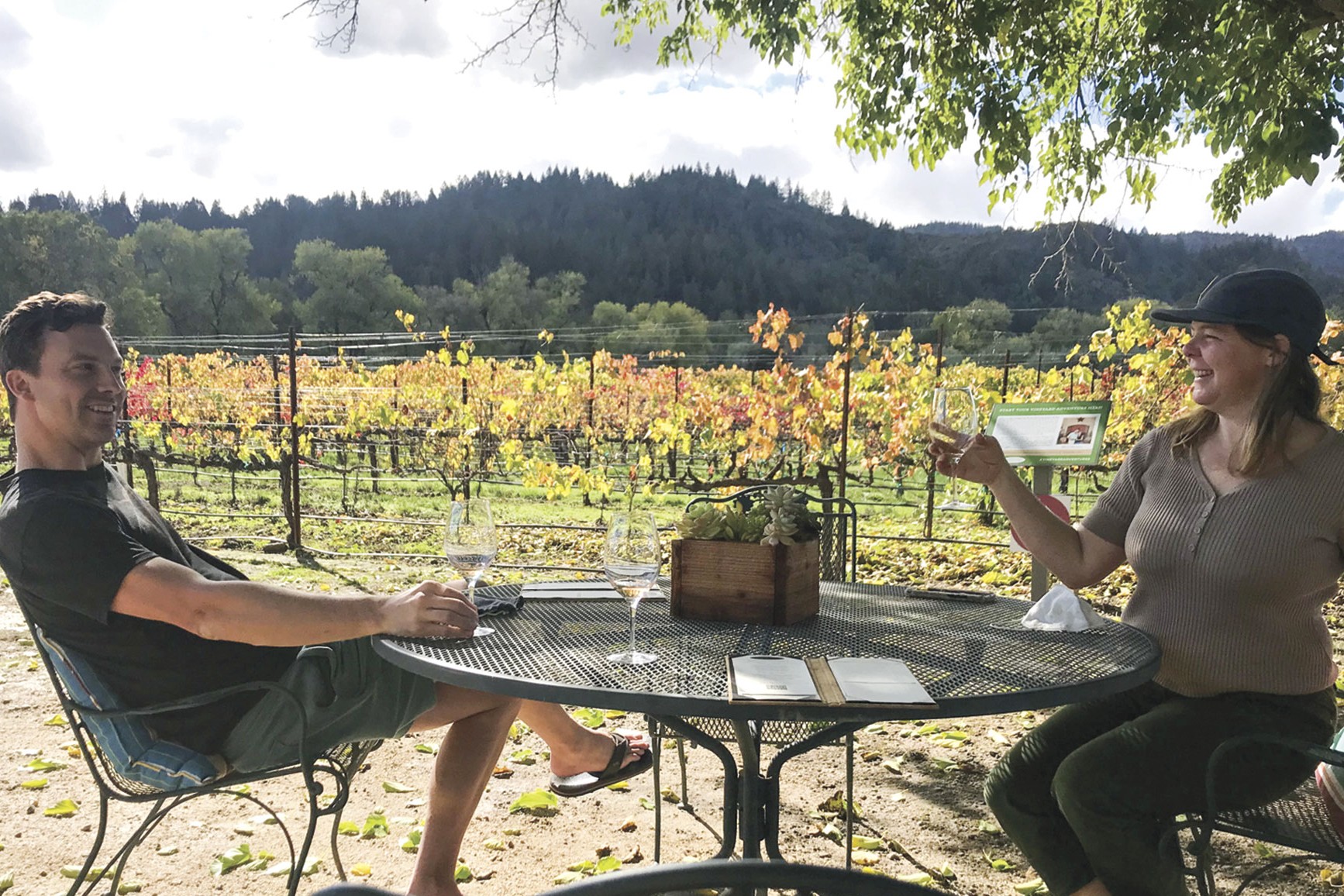
Photo by Craig Outhier
Phoenix Magazine just published an article called “Healdsburg Wine Tour”, and we were excited to be among the wineries they showcased. The article says, “Amista Vineyards, known for its sparkling wines, the winery has a comfortable patio with scenic views of its 20-acre vineyard and Mount St. Helena. We enjoy getting a tongues-on primer in the art of making bubbly while noshing on the winery’s excellent charcuterie board, much of it derived from the on-site farm and garden.” The article reminded us how much we adore our little town of Healdsburg and how much fun it is to share it with visitors.
Healdsburg on Many Best Small Towns in America Lists
When we first started visiting Healdsburg in the 1983, it was a sleepy small town with wineries in the surrounding countryside and a couple of great restaurants. Since then, it has been discovered and is now a popular destination. It has remained small and charming but can no longer be described as sleepy. On most days, the downtown is bustling with people checking out the shops around the town square or sitting on a park bench under the trees overlooking the fountain.
We now have many more great places to dine, and the town is packed with art galleries, boutiques and unique tasting rooms. The article describes all our favorites and goes on to say, “And for a town of 11,000, it boasts one of the densest hospitality biomes you’ll find in California, which explains all those best-small-town accolades. It’s quaint and seasoned, but unmistakably upscale.”
Just Outside Healdsburg - Wine Tasting in Dry Creek Valley
“Still, the thing I love best about the Sonoma County town is leaving it – or more precisely, hopping on a bike and gliding around the rolling, winery-encrusted foothills just a few miles up the road,” the writer declares.
Agreed! There are more wineries in Dry Creek Valley than there were when we first visited, including Amista Vineyards! The idea of starting a winery wasn’t even in the back of our minds in 1983 when we first saw Healdsburg while visiting from our home state of Colorado. It was nearly two decades and a trek from one coast to the other (Colorado to Silicon Valley to New Jersey to Nevada) before we moved to Healdsburg in 2002. We launched Amista in 2004.
Our little cottage, that we think was first built around 1918, is surrounded by vineyards. I never get tired of waking up to the vines outside our bedroom window. It is a pleasure to walk the vineyard each day with our two Shelties, Dylan and Torin, and pop into our tasting room to meet our guests. We’re in the heart of the bucolic countryside and yet only five miles from our adopted hometown of Healdsburg.
If you visit Healdsburg, we invite you to Taste with Us at Amista Vineyards in the heart of Dry Creek Valley. We specialize in estate grown, Methode Champenoise sparkling wines and Rhône varieties. Soak up our gorgeous vineyard and valley views and experience a friendly Amista welcome (Amista means “making friends” in Spanish).
Read more in “Healdsburg Wine Tour”, by Craig Outhier for Phoenix Magazine.
Chardonnay Four Ways from Amista Vineyards
Including the First Sparkling Blanc de Blanc from Dry Creek Valley!
…and we didn’t think we liked Chardonnay!

We have always grown Chardonnay grapes on our estate Morningsong Vineyards, and we have come to love creating new wines from it. Today we offer four ways to enjoy Chardonnay and another coming in 2024 for our 20th anniversary.
Amista Vineyards Chardonnay Collection
Amista Chardonnay
- 100% chardonnay
- Harvested every year since 2004
Amista Sparkling Blanc de Blanc
- 100% Chardonnay
- Methode Champenoise
- Harvested every year since 2011
Amista Sparkling Fusión
- A blend of 80% Chardonnay and 20% red Rhône grapes - Syrah, Grenache or Mourvèdre
- Methode Champenoise
- Harvested every year since 2013
Amista Cristalina Chardonnay
- 100% chardonnay
- Fermented in a concrete egg imported from France
- From the Chardonnay Clone 4 block
- Harvested first in 2021
A New Sparkling Chardonnay Coming Soon!
On August 17, 2022, winemaker Ashley harvested Chardonnay from the "Lemonade Block" to make a special sparkling wine – yet to be named. We will release it in 2024 to celebrate Amista’s 20th anniversary.
Chardonnay in Dry Creek Valley
We found our Dry Creek Vineyard in 1999 – on the internet! We were living in New Jersey at the time and my husband Mike was yearning to return to California where he had made his first wine in our garage. We have always loved the town of Healdsburg and the Dry Creek Valley, which we first discovered when we visited from our home state of Colorado back in 1983. So, finding a vineyard here was a dream come true.
Our love affair with Sonoma County and Healdsburg continued after we moved from Colorado to Silicon Valley. Perhaps our frequent visits were what inspired Mike to plant a backyard vineyard on a hillside at our home in Saratoga, California, and then to try his hand at making wine in our garage. Back then, making wine and growing grapes were brand new hobbies for Mike.
But the hobbies were cut short when I got a job offer in New Jersey. We never saw our vineyard produce grapes because the vines were only a year old when we left. Fortunately, the wine Mike made in the garage was in a barrel that we took with us to New Jersey and aged in our basement. After a few years, the Cabernet Sauvignon was ready to drink. We shared it with friends who declared it to be delicious and Mike’s secret dream of becoming a winemaker was fortified.
That is what prompted him to start looking for properties near Healdsburg and led us to this beautiful 28-acre vineyard located in the heart of Dry Creek Valley. At that time, the entire vineyard was planted in Chardonnay. Over the years, we have replanted every vine and replaced some of the Chardonnay with Rhône varieties.
Why Chardonnay?
Ironically, we didn’t even make Chardonnay during our inaugural year in 2003 because it wasn’t one of our favorites, even though over half the vineyard was planted in Chardonnay at that time. We were persuaded to make our first Chardonnay in 2004 by two of our club members and we have made it ever since. We decided to make an unoaked Chardonnay (fermented in neutral oak barrels) which was unusual for California Chardonnays of that era. We much preferred it to the big oaky Chardonnays and we’ve continued to make it in that style throughout the years.
Chardonnay – Making it Sparkle!
We made our first sparkling wine in 2008 from our estate Syrah grapes and it quickly became a cult favorite. When our winemaker, Ashley Herzberg, joined us in 2011, the two of us immediately conspired to make a Blanc de Blanc from our Chardonnay because we both adore sparkling wines.
I am especially delighted that we started making it because Blanc de Blanc has become my “go-to” wine! A glass of “Blanc” marks the end of my workday and a time to throw frisbees for the dogs as we sit on the deck and enjoy looking out over our Chardonnay vines. Often, we enjoy the Blanc de Blanc with our entire meal.
Fusión - Our First Sparkling Blend
It didn’t take long for Ashley to add more sparkling wines to our collection. Every wine we made during our early years was from a single variety (except Ilusión, a port-style dessert wine, but that’s a story for another time). Although making single varietal wines requires skill and has its own set of challenges due to the vagaries of weather and water with each vintage, winemakers love to do blends.
So, it was no surprise that Ashley wanted to make a sparkling blend and created a wine we call Fusión, made from Chardonnay with a kiss of Grenache and a bit of either Syrah or Mourvèdre.
Cristalina from a Concrete Egg
I have also fallen in love with Cristalina, our newest Chardonnay, fermented in a concrete “egg”. The idea of making a second Chardonnay emerged in a conversation about how we could use more of our estate fruit in our Amista wines. Winemaker Ashley threw out the idea of fermenting a Chardonnay in concrete, which sounded intriguing.
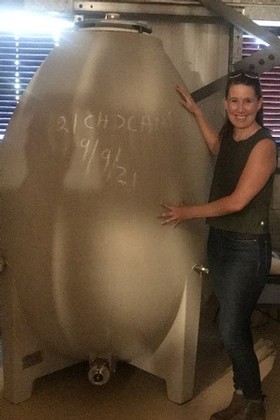 She went off to research concrete fermentation vessels and came back with a proposal to acquire a concrete egg. She knew exactly the one she wanted, called an “Oeuf de Beaune”, a concrete fermenter in the shape of an egg imported from France.
She went off to research concrete fermentation vessels and came back with a proposal to acquire a concrete egg. She knew exactly the one she wanted, called an “Oeuf de Beaune”, a concrete fermenter in the shape of an egg imported from France.
Ashley describes how the egg shape creates a natural circulating effect while the grape juice is fermenting on the yeast and exposes the wine both to air at the top of the vessel and to the concrete, which heightens the sense of minerality that is naturally present in the wine from our rocky vineyard soil.
Want to learn more about "the egg" and its affect on the wine? Check out the "Concrete Egg" video from Ashley.
Come Taste With Us and discover Chardonnay Four Ways from grapes harvested in our Morningsong estate vineyards, or treat yourself to our Rhône reds and sparkling wines.
What is Blanc de Blancs?
A Sparkling White Wine Made from White Grapes
…typically, Chardonnay

First, I must confess that our Amista Blanc de Blanc is the bubbly I drink most often. It marks the end of my workday and the beginning of the evening. I pour a glass and either head for the back deck where my husband Mike and I throw the frisbee for our dogs and gaze out over the Chardonnay vines, or as we prepare dinner. He does the entrée. I do the salad.
White from Whites
But I digress. Blanc de Blancs, translated from French, means literally “white from whites”. The term originated in the Champagne region of France where the wine is nearly always made from 100% Chardonnay grapes. This contrasts with most Champagne that is a blend of three grapes, Chardonnay, Pinot Noir and Pinot Meunier.
How Does a Blanc de Blancs Taste?
Typically, a Blanc de Blancs from Champagne will be crisp and clean with a lively acidity and a touch of minerality, and in some cases a yeasty component developed during fermentation. However, the taste varies widely depending on the specific location the grapes were grown, the winemaker's style, the dosage (small amount of sugar added to the finished wine), and the amount of time the wine spends on the lees (the yeast). Wines that spend more time on the lees will have more of the yeasty character.
Is Blanc de Blancs made only in Champagne?
Today, sparkling wines are made around the world in all countries where wine is made and that goes for Blanc de Blancs. You can find lovely examples from elsewhere in France, Spain, Italy, Germany, England, South Africa and of course, here in the U.S. I suppose technically, Blanc de Blancs could be made from any white grape, but they are almost always made from Chardonnay following the French tradition.
Is Blanc de Blanc Sweet?
It’s usually dry. Fine Blanc de Blancs from Champagne and elsewhere in the world are typically on the dryer side, designated as Brut, Extra Brut or Brut Nature. The sweetness is determined by the amount of dosage (a mixture of wine and sugar) that is added to the sparkling wine just before the cork and cage are put on the bottle.
There are several levels of sweetness designated for Champagne and sparkling wines as measured by the number of grams per liter of sugar added.
Doux - more than 50 grams of sugar per liter
Demi-sec - 32-50 grams of sugar per liter
Sec - 17-32 grams of sugar per liter
Extra dry - 12-17 grams of sugar per liter
Brut - less than 12 grams of sugar per liter
Extra brut - 0-6 grams of sugar per liter
Brut nature – 0 – 3 grams of sugar per liter
Our Amista sparkling wines are typically Extra brut or Brut Nature. We have found that most of our customers (and I) like our sparkling wines dry.
What Foods Pair with Blanc de Blancs?
In my book, almost everything! There are some classic pairings that are always wonderful like briny oysters on the half shell, crab cakes, grilled sea bass, and sole picatta. It is also lovely with hard cheeses – I especially love aged Parmesan – or as a counterpoint to soft triple cream cheeses.
It goes equally well with comfort foods, especially fried foods like fried chicken, French fries and Fritto Misto. It's perfect with grilled chicken, garden salads and light pasta dishes like linguine with pesto or fettucine alfredo.
I recently heard of another comfort food pairing from a friend that I can't wait to try. He had it with creamy potato soup and crusty homemade bread. He said “This totally worked with a glass of Blanc de Blancs. The Blanc was refreshing and balanced the richness of the soup."
For something more casual, pour a glass and take it to the pool with a bag of potato chips and some crème fraîche for dipping and you'll be happy. We like to serve it in our tasting room with freshly popped popcorn with a drizzle of olive oil and a dusting of lemon herb salt.
Karen MacNeil, author of the Wine Bible says, “Blanc de Blancs Champagne is the best wine ever for a hot summer night.” I agree with her, except I would not limit it to Blanc de Blancs made only in Champagne.
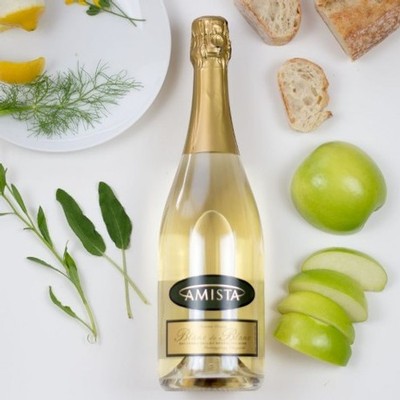 How Does Amista Blanc de Blanc Taste?
How Does Amista Blanc de Blanc Taste?
Our Amista Blanc de Blanc (you may notice we use the singular “Blanc” – don’t ask me why), is always crisp, refreshing and bright. Although we don’t vintage date it, we make it from a single vintage, so it varies a bit from year to year. It typically has lemony notes with green apple and sometimes the flavors of Asian pear.
If you want to discover for yourself, please Come Taste with Us. We have several sparkling wines made in the classic Méthode Champenoise, as well as a collection of estate grown Rhône wines.
Amista Uses Méthode Champenoise to Make Sparkling Wines
What is Méthode Champenoise?
What I’ve learned about it and what makes it special…
We made our first sparkling wine in 2008 and it’s been an amazing process of discovering how sparkling wine is made and how the process differs from making our reds, whites, and rosés. I always loved drinking sparkling wine, at least once I realized it could be dry and interesting and delicate. But I didn’t know how it got to be that way until we started making it ourselves. Today we make six estate grown sparkling wines!
What is Méthode Champenoise?
Méthode Champenoise or Méthode Traditionnelle is the process used to make French Champagne, as well as many other sparkling wines around the world. There are several methods for making sparkling wine and the method thought to produce the best sparkling wines is the traditional method.
In this method, the wine goes through a secondary fermentation in its own bottle. Unlike still wines that are fermented only once in tanks, barrels or other vessels, sparkling wines are fermented twice. The second fermentation is what makes the wine “sparkle”.
What is Secondary Fermentation in the Bottle?
After the initial fermentation, the sparkling wine is bottled with an additional mixture of sugar and yeast, called the liqueur de tirage. The sugar acts on the yeast producing carbon dioxide gas that is trapped in the bottle, thanks to a crown cap (like a bottle of beer). Quality sparkling wines are left on the yeast, or lees, for several months, sometimes years.
Does the Yeast Stay in the Bottle?
No, and this is another distinctive feature of the Méthode Champenoise. The reaction of the sugar and yeast produces carbon dioxide and dead yeast cells. The residual yeast cells are removed by a process called disgorgement.
What is Disgorgement?
I know, it isn’t exactly the most appealing word for such a beautiful wine. It sounds much better in the original French – dégorger. In disgorgement the dead yeast cells are propelled from the bottle when the crown cap is removed.
What is Riddling?
Prior to removal of the crown cap, the bottles are riddled, a process where the bottles are turned on their heads and slowly shifted each day until all the dead yeast cells are in the neck of the bottle. Then the neck is frozen creating an icy plug of the residual cells. When the crown cap is removed, the plug is forced from the bottle by the pressure of the carbon dioxide in the wine. It’s quite an ingenious process.
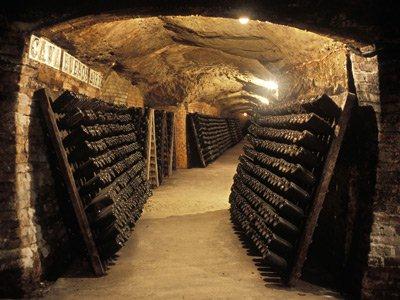
Riddling Racks in a Cave
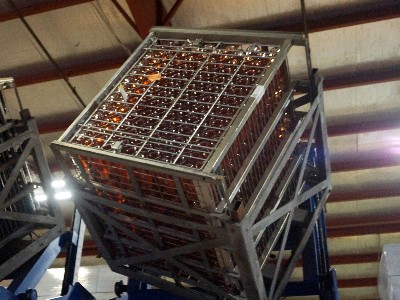
Gyropallete Riddling Amista Fusión
The process can be done by hand by experienced “riddlers” with the bottles resting with the tops down in riddling racks. It’s more common today to accomplish riddling in huge cages that gently shake the wines on a daily schedule. Disgorgement can also be done by hand but is much faster and safer to do by machine. It’s fascinating to watch - providing you have on a pair of safety glasses and are standing behind the safety glass!
Why is Méthode Champenoise Preferred?
Fermenting the wines in their own bottle is what produces the fine bubbles that are coveted in the best Champagnes and sparkling wines. There are other methods of producing sparkling wines that are faster and less expensive, but do not produce the delicate bubbles and more complex flavors of a fine sparkling wine.
Want to treat yourself to our bubbles? Come Taste with Us! In addition to our collection of estate grown sparkling wines we also have a wonderful lineup of Rhône reds.
Amista Sparkling Syrah - One of the Best 2022 Rosé Wines
When the JetSettingFashionista picks you as one of the “The Best 2022 Rosé Wines I’m Loving”, you know you’ve arrived! She describes our Amista Sparkling Syrah as “aromas of freshly picked raspberry and orange blossom leave the perfect bright taste on the palette.”
We call is simply, “Joy in a Bottle!"
It Started as a Class Project
We first made our Sparkling Syrah in 2008 and it’s been a cult favorite ever since. Other than our club members and frequent visitors, it is still a best kept secret. That was the bubbly that launched us on our journey into sparkling. It started out as a class project at Santa Rosa Junior College, and it was so good and so beautiful in the bottle we decided we had to make it.
Six Estate Grown Sparkling Wines
We now make six different sparkling wines, all from grapes grown on our estate vineyards, and all using the traditional Methode Champenoise. The post says, “Amista Vineyards produces some of the best rosé wines right here in Healdsburg, California.” We are honored to be on the list!
Our other sparkling wines include Blanc de Blanc, Sparkling Grenache, Sparkling Mataró, Fusión (a blend of Chardonnay, Grenache and Mourvèdre), and our newly debuted Sparkling Tres (a GSM rosé blend). We love bubbles and we are the only winery in Dry Creek Valley with an all-sparkling wine club.
Plus Limited Edition Rosés
In addition to our sparkling rosés, we also have two limited edition still rosé wines this year, a Rosé of Grenache and a Rosé de Tres, a blend of Grenache, Syrah and Mourvèdre. We made only 68 precious cases of each.
Rosés with Food
We love to have a chilled rosé with our favorite summer meal, linguine con pesto (made with basil, fresh from the winemaker’s garden) topped with wedges of just picked tomatoes. Now that is summer!
The Sparkling Syrah can stand up to heartier flavors, including spicy foods. It’s wonderful with sushi and spicy Chinese or Thai dishes. We even love it with taco salad, which is another of our easy summer weeknight meals. And did we mention the holidays? It not only goes with all the dishes on the holiday table, but it adds a festive pop of color and refreshing brightness to any occasion.
We invite you to Come Taste With Us and get in on the secret of our Sparkling Syrah, along with our other sparkling wines and red Rhône wines.
Check out “The Best 2022 Rosé Wines I’m Loving” to see all the delightful rosés on the list.
Dog Friendly Wineries Near Healdsburg - Amista Vineyards
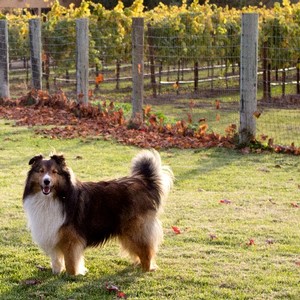 Two Kinds of Dog Lovers for Wine Tasting
Two Kinds of Dog Lovers for Wine Tasting
We have two kinds of dog lovers at Amista. Which one are you?
The first lives a car ride away, loves wine, wants to explore new wineries, or return to their favorites, loves their dog, and hates to leave him or her at home…so they bring them along. They are welcome at Amista!
The second comes from afar, loves wine, wants to explore new wineries, or return to their favorites, loves their dog, and hates to leave them at home, but couldn’t bring them and misses them terribly. They are welcome at Amista!
For the dogs we offer fresh water – current vintage – and doggie treats. For the humans who miss thier dogs, we offer ours for petting and loving, when we visit the tasting room on our daily walk.
Dog Friendly Wineries in Sonoma County
If you’re visiting Sonoma wine country, you’re in luck. There are several wineries that are dog friendly. Amista was featured along with our dog friendly neighbors in “18 Best Dog-Friendly Wineries in Sonoma County” in Sonoma Magazine.
Amista Dogs Dylan and Torin
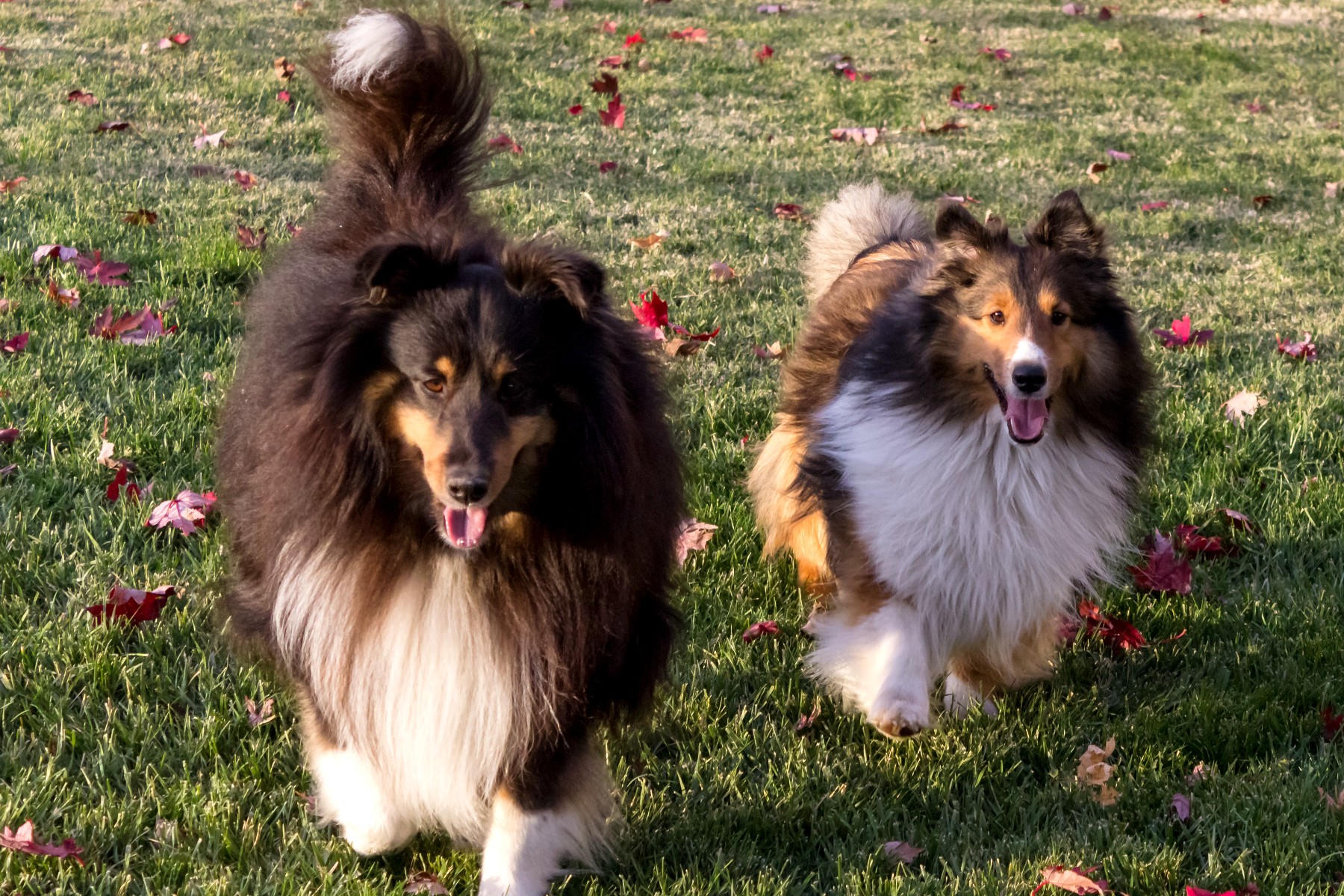
Our dogs, Dylan and Torin (both Shetland Sheepdogs or Shelties for short), love to visit our tasting room on their daily walks. They especially love to meet other dogs. Once they’ve made the rounds of the visiting canines, they greet the human guests. We can always tell when people are missing their dogs at home because they are eager to say hello to our pups.
“Several Sonoma County wineries are now welcoming visitors to pair vino with Fido in ways which both dog-owners and dogs can appreciate: fine wine and artisan bites for “Mommy” and “Daddy,” and treats, vineyard sprints and bowls of water for the beloved pooch,” the article goes on to say.
Vineyard Adventure Walk – for Dogs and Their Humans
Our self-guided vineyard tour is another attraction that is perfect for dogs and their owners. You can breathe the fresh air as you explore our vineyards on a self-guided Vineyard Adventure Walk, created in partnership with the Sonoma County Winegrowers. See the Grenache, Syrah, Mourvedre and Chardonnay varieties we grow, learn about the wines we make from them and discover our backwater pond that is part of the Habitat Enhancement Project designed to restore the natural fish habitat in Dry Creek. The complimentary walk is approximately one-half mile on flat terrain. Dogs on a leash and children are welcome.
Discover Estate Grown Sparkling and Rhône Wines
“After taking a self-guided tour of the property with your dog, taste Amista's sparkling and still wines on the patio,” says the writer. We are the only winery in Healdsburg to offer a selection of sparkling Rhône wines as well as a Blanc de Blanc made from our Chardonnay grapes. If red is more your style, order our Taste of Amista flight and enjoy a selection of our Rhône reds, Dry Creek Zinfandel or Rockpile Cabernet.
Friendly Vibe, Gorgeous Views
Amista means “making friends” in Spanish and you can be assured of a warm welcome and a friendly experience. Sit on our solar covered patio surrounded by our estate vineyards and gaze out at the gorgeous Dry Creek Valley hillsides.
If you’re planning a visit to Sonoma, with or without your dog, come Taste With Us at Amista Vineyards, Healdsburg, California in the heart of Dry Creek Valley.
Check out 18 Dog Friendly Wineries in Sonoma County in Sonoma Magazine.
Wine and Food Festival Tips - Make It Magical!
My Top Ten Tips
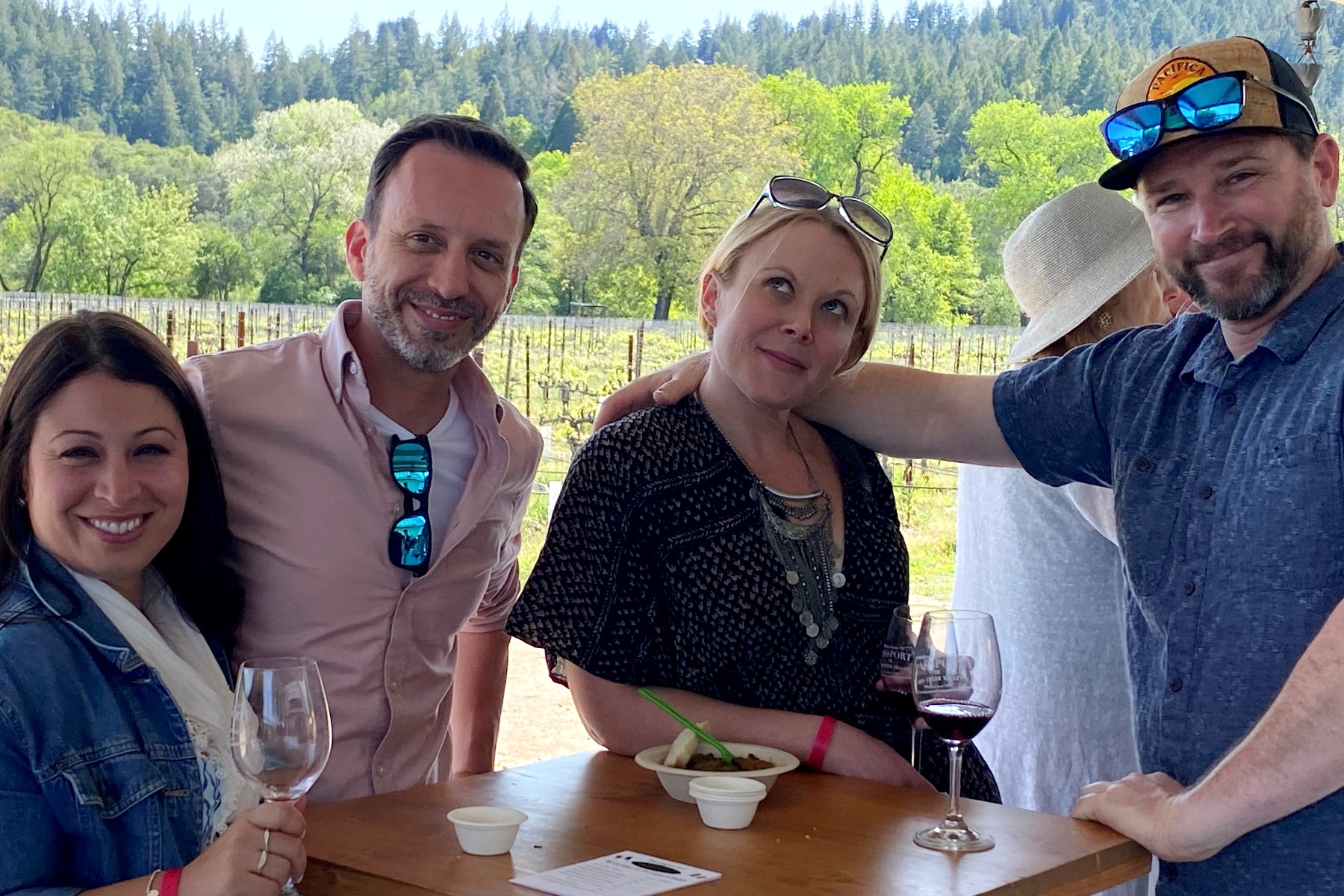
...based on 20 years of Passport to Dry Creek Valley, the premiere wine and food festival in Sonoma County
I know I’m hopelessly partial, but my favorite wine festival happens right here in Healdsburg, California – where we live. It’s called Passport to Dry Creek Valley® and even before we lived here and started our own winery, we loved Passport. Now we are hosts. I’ve learned a lot about wine events over the years being on both sides and asking the veterans who attend year after year.
Wine festivals can be magical weekends shared with a special person or a whole group of friends. Here are my tips for how to make them remarkable. But first…
What is a wine festival?
A wine festival is an event featuring wine tasting from many wineries all included for a single ticket. The event often showcases a wine growing region or varietal. I am partial to the ones that also include food. And I love the chance to meet the winemaker and owners.
There are two main formats. The first takes place all in one location. The second enables participants to travel from winery to winery.
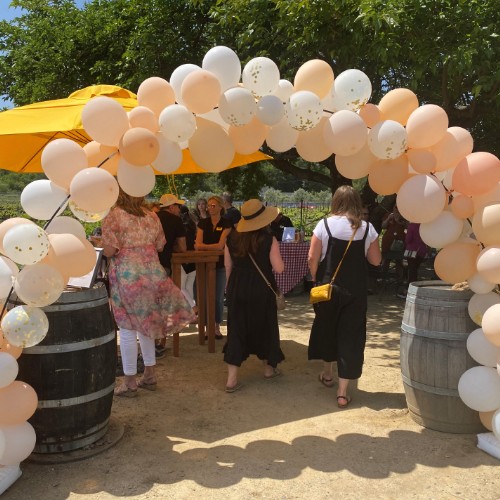
The focus of this post will be on events where participants visit the wineries. This is my clear choice since you can discover the personality of each winery by seeing it in its natural habitat – whether it be a warehouse, an urban storefront or surrounded by vineyards and breathtaking views.
So Why Go to a Wine Festival?
The logical reason is that it’s an opportunity to visit and taste the wines of many wineries with just one ticket. But for me, the real draw is that these events are elevated from the everyday and have a festive atmosphere, which makes the perfect inspiration for a memorable getaway weekend.
Most festivals also include something you won't find by visiting at other times, special wine and food pairings, entertainment, education, barrel tastings, opportunities to meet the winemakers and owners, or access to wineries not generally open for tasting.
Here are my Top 10 Tips
1. Choose the event that’s right for you.
Where and what time of year? You might want to explore a region you've never visited. Wine festivals are held in all parts of the world. On the other hand, we know people who have fallen in love with a particular wine region or event and return every year.
What matches your style and budget? Some events include inspired food pairings by acclaimed chefs along with entertainment. Others are laid back and offer small bites or encourage you to bring a picnic.
2. Leverage your wine club memberships.
3. Go with people you really enjoy.
Some people like to attend with one special person - a spouse, a partner, a best friend. We have one couple that comes from New Jersey every year. Others like to get a group of friends or family together and make it a special occasion weekend. A group of seven couples comes every year for their annual wine buying weekend. You're going to be spending a lot of time together, so be sure you're compatible traveling companions!
4. Book your lodging early.
Event weekends bring thousands of people into the area and lodging is booked well in advance. Our regular Passport guests usually book next year's lodging while they're in town for this year's event. The event organizers often provide a list of local lodgings or if you're a club member of a participating winery, they can generally recommend places to stay.
5. Take advantage of ancillary events.
6. Know what you like and plan accordingly.
7. Explore - go to some wineries you've never visited.
8. Ask for suggestions.
9. Pace yourselves.
Minimize driving time by optimizing your route. Either plan it out in advance or drop in to several wineries in the same area.
10. Book a driver.
2022 Passport to Dry Creek Valley
We were overjoyed to host Passport this year after a two-year hiatus. The guests seemed even more ecstatic to be back. The mood was festive and friendly. We featured two of our estate-grown Rhône inspired wines, a 2020 Grenache and 2018 Syrah. They were both big hits. A huge “hunk” of Parmesan, aged 24 months, made a great partner with the Grenache. And the Syrah was the perfect match for braised shortribs with polenta, from our wood fired oven.
For our club members and declared sparkling lovers, we offered entry to the “bubble lounge” where our guests could try the newest addition to our collection of sparkling gems, Sparkling Tres. It is made from three Rhône varieties, Grenache, Syrah and Mourvèdre.
Amista Vineyards
Vicky and Mike Farrow
If you come to any of the wine events in our area, we invite you to visit Amista just outside the charming town of Healdsburg, California. We’ll be standing out front welcoming you or meandering through the crowd.
Or come Taste with Us any time!
Does Amista Vineyards Make Vegan Wines?
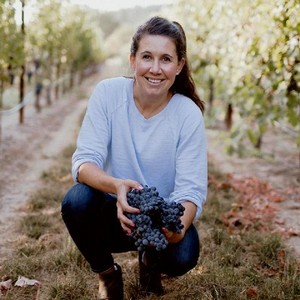 Yes! Since 2014, every wine in the Amista collection is vegan.
Yes! Since 2014, every wine in the Amista collection is vegan.
Sonoma Tourism recently published an article showcasing some of the vegan wineries in Sonoma County. It explains that “Historically, and this is largely still true present day, the process of fining and filtering wines always involved the use of fining agents that included animal ingredients. There’s nothing unusual about these ingredients in winemaking, and these fining and filtering methods are still prevalent in most commercial wine-producing regions around the world.”
What Are Fining Agents?
Fining agents are used to clarify and polish the wines to remove the small particles and sediment. The agents bind with the particles making them large enough to filter out of the final wine. They are completely removed before the wine is bottled, but the fact that animal derivatives were used in the winemaking process means the wines cannot be considered vegan.
Does Amista Use Fining Agents?
In the early years, like most wineries, we used fining agents for some of our wines. Since Ashley Herzberg joined as winemaker in 2011, all our wines have been vegan, except one where she used egg whites as a fining agent. That wine was vegetarian but not vegan.
Amista - Vegan Wines, Organically Farmed
Now all our wines are vegan. This is only one part of our commitment to make our winemaking process more natural, as the article explains:
“All of Amista Vineyard’s wines are vegan, as a result of the winery’s focus on minimal-intervention winemaking practices. No fining agents are added to Amista’s wines. Instead, the focus is on keeping wines in balance naturally, through close attention to the vineyard, pressing choices, and skin contact time.
Amista’s vineyards are farmed organically, the property is free of herbicides and glyphosates, and the vineyards are certified as Fish Friendly and Sustainable.”
Today, there are more and more wineries in Sonoma County that craft vegan wines. Check out Sonoma County Vegan Wineries for a diverse list of wineries from all parts of Sonoma County. Yes, we have something for everyone!
When you come, we invite you to Taste with Us at Amista Vineyards in the heart of Dry Creek Valley, just outside the town of Healdsburg. We specialize in estate grown, Methode Champenoise sparkling wines and Rhône varieties. Soak up our gorgeous vineyard and valley views and experience a friendly Amista welcome (Amista means “making friends” in Spanish).
Need Your Sparkling Wine Fix? Amista Vineyards is a A Must in Dry Creek Valley
Dry Creek is a jewel in the crown of the Golden State according to Allison Bailin Batz in her recent article for FabulousCalifornia. “As one might expect, the best adventures in Dry Creek are centered around wine,” says Batz. She’s right!
In addition to incredible wines, Dry Creek serves up beautiful vistas, acres of vineyards, and a friendly, laid-back atmosphere. Did you know we have just two roads, two stop signs, and no traffic lights in Dry Creek Valley? You’ll be among the vines surrounded by tree-studded hillsides, yet only a few minutes from the charming town of Healdsburg.
Favorite Wineries in Dry Creek Valley
Tasting marvelous wines is the reason to visit Dry Creek. Batz shares a list of her favorites. We are honored to be on the list with some of our own favorite winery neighbors. Here’s what she says about Amista:
“This small, family-owned winery is a must if you need to get your sparkling wine fix. There is a splendid winery walk you can take by reservation that showcases their sustainable farming practices and gives a behind-the-scenes look at how they succeed at making Rhône varietals in the heart of California.”
Even though she narrowed down her list of wineries from 80 to 12 of her favorites, you may need more than a weekend to check them out!
Local’s tip: be sure to have some food as you venture out wine tasting. You can pick up sandwiches or deli items on your way into Dry Creek at Big John’s, our incredible local market, or pop into the historic Dry Creek General Store for takeout sandwiches and salads. Or you can order a cheese and charcuterie board when you visit us at Amista!
Where to Dine in Healdsburg During Your Visit
“Oh, we are not done yet! You cannot leave Dry Creek without checking out at least a few of the lauded restaurants and bars,” adds Batz. Totally agree and she has some of our favorites on the list. We also love Baci Café and Wine Bar, Campo Fina and Willi’s Seafood. You’ll need a place to stay while you’re in Healdsburg, and we have some nice ones. The article showcases several terrific boutique hotels.
Check out A Weekend in…Dry Creek Valley by Allison Bailin Batz in FabulousCalifornia.
Get Your Sparkling Wine Fix!
Need your sparkling fix? Come taste with us. We have estate grown, Methode Champenoise sparkling wines and Rhône varieties paired with a friendly Amista welcome.
